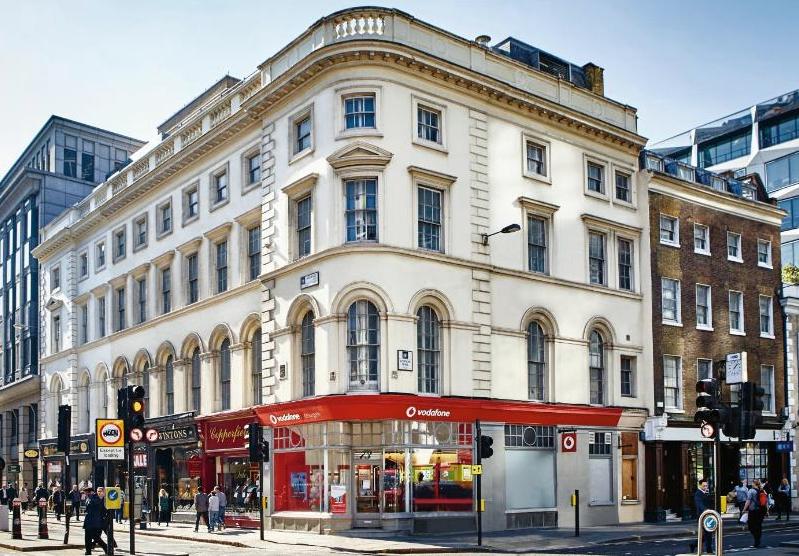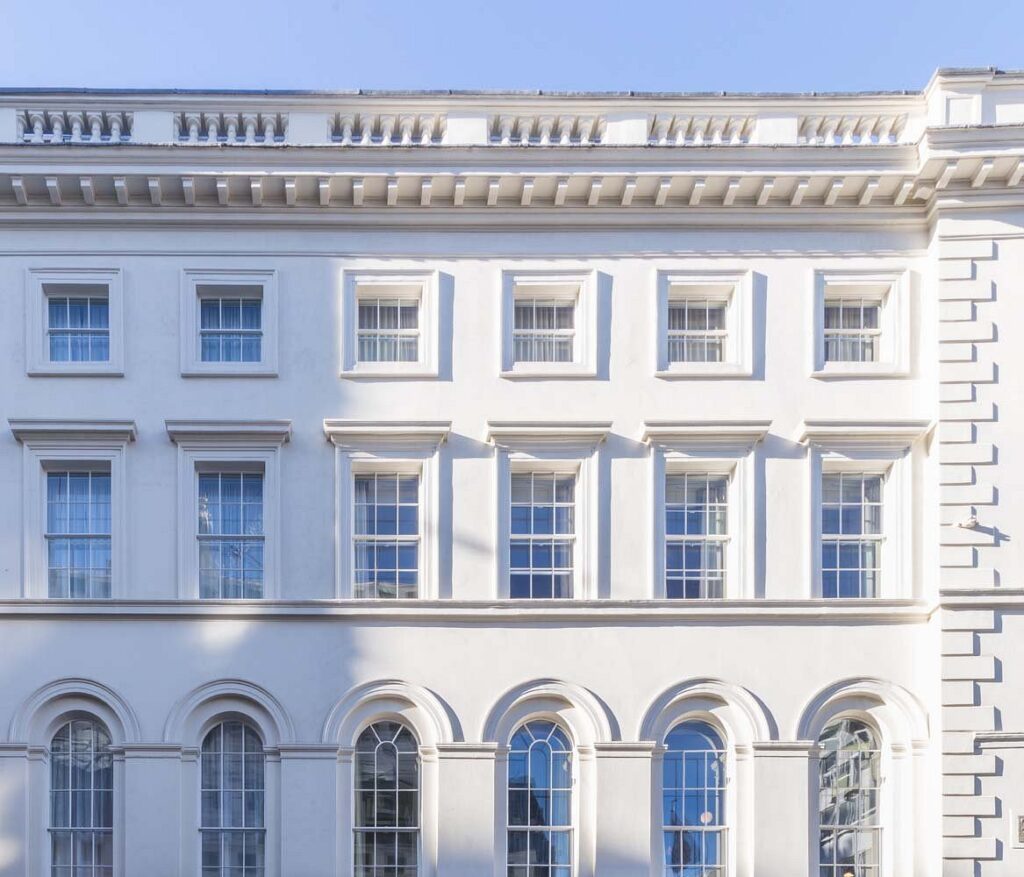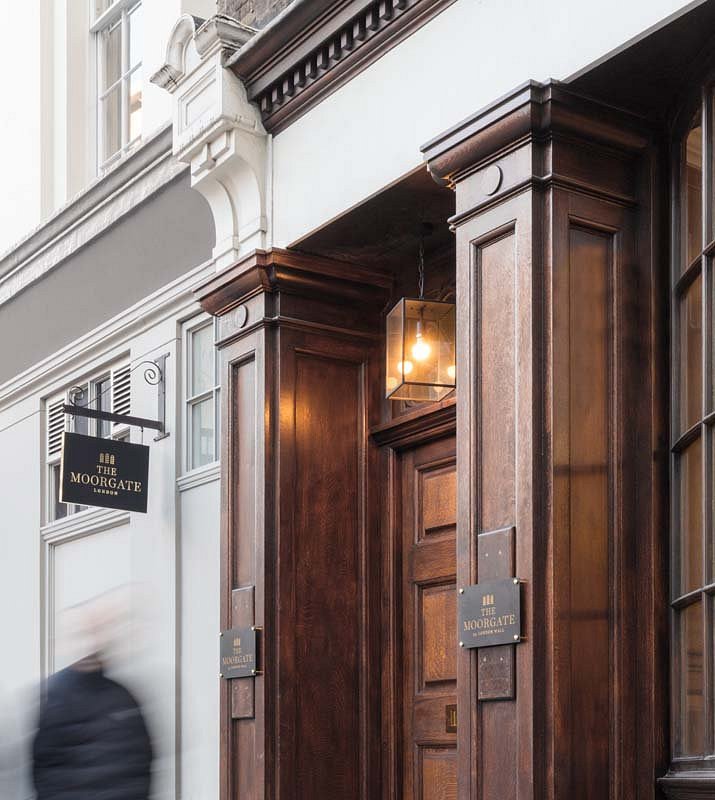63-73 Moorgate, EC2
Built: 1840 circa
Architect: Sir Robert Smirke
Location: Moorgate
Listing: Grade II (1972)

This group of buildings were the last designed by Sir Robert Smirke to be built along the lower, then newly-carved out, portion of Moorgate (between London Wall and Lothbury/Gresham Street). They are illustrative of how much of Moorgate’s streetscape looked by the 1840s and one should be thankful that they survive amongst the more ambitious commercial palazzi of the late 19th and early 20th century.

The basic building form is not terribly different from the long-standing Georgian and Regency terraces that back then still accounted for the vast majority of City buildings (a rare survival is visible next door, on London Wall). Beside the stucco cladding, however, there are notable innovations such as the doubly arched 2nd storey windows, expressed (as opposed to implied) cornice and terminating intermittent balustrade. The overall scale is also more generous. They therefore mark an interim between the plainer Georgian idiom and the later, generally more elaborate, Victorian forms that would follow.
Here is a very practical, no-nonsense terrace of buildings but also one ennobled by touches like the accenting window pediments at both extremities and the rounded corner, nicely accentuated by quoining. A recent C21 conversion has joined this terrace with the Georgian building at 34 London Wall creating a boutique hotel that occupies the upper storeys of the Smirke survivors.

It is worth noting, in passing, that this small parade of low-scale buildings, like the somewhat more ornate one across from it on London Wall, still house some relatively rare example of local, domestic-scale retail businesses that survived the wave of large corporate headquarters that took over from the late C19. That trend in use turned the City from a comparatively diverse location to a rather ‘monocultural’ office district and has only really begun to be reversed in the C21.
